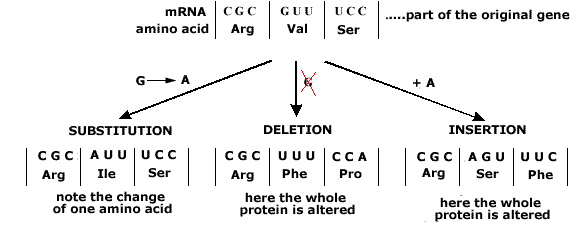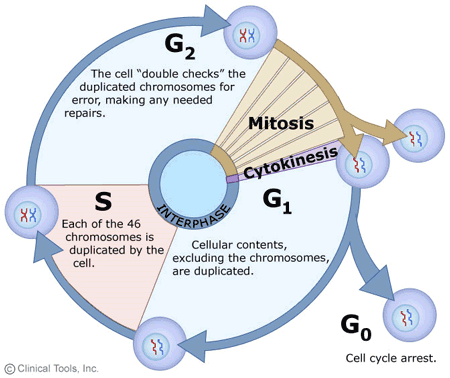Quantasia Wooten
Senior / Biology Major
 |  |  |
|---|---|---|
 |  |  |
Personal Reflection:
Cancer Biology is an informative course that mainly focus on cancer. At the beginning of the semester we took a pre-test and I did not know much about cancer biology. I didn't even do well, so I immediately became discouraged. However, over the course I was reassured due to Dr. Dance's informative Power Points, thorough seminars towards the subjects, and team work presentations on certain topics regarding cancer. I know more now than I knew then. The only thing that I had a difficult time with was reading and comprehending science based articles.
Six HallMarks of Cancer
1. Self-sufficiency of growth signals: Unlike normal cells, Cancer cells do not require outer signs to be invigorated to develop, frequently having on-off switches that are stuck in the on position.
2. Insensitivity to anti-growth signals: It's insufficient to be activated to develop and separate, in light of the fact that the systems are adjusted with brakes to restrain over the increased cell development. Cancer cells have lost this function.
3. Evading apoptosis: Apoptosis is a programmed cell death. This normally happens if there is unrepairable harm or transformations to DNA inside the cell. To abstain from duplicating this DNA the cell is annihilated. Growth cells can disregard flags that instruct it to bite the dust and stay away from death while proceeding to live, as well as develop and gap.
4. Limitless replicative potential: Cancer cells can keep up the length of their telomeres which mean they never shorten, and the cell never die. This enables the malignancy cell to continuously isolate and make more tumor cells.
5. Sustained angiogenesis: Cancerous cells require blood vessels to supply oxygen and supplements to nourish the cell. However cancer cells can release signs to the body that can trigger the development of new blood vessels. With this ability, cancerous cells never "starve" to death and can ceaselessly, regardless of where they are get supplements and oxygen to develop and divide.
6. Tissue invasion and metastasis: With the uncontrolled development and division, cancer cells can sever and attack different parts of the body. This process is known as metastasis. This can make cancer settle in different parts of the body, and start development there, similar to an invasive species with no regular predators to prevent them from assuming control.
Gene
Mutations
Insertion: A type of mutation that occurs when
a nucleotide is added to the DNA sequence.
Substitution: Mutation that can exchange one base
for another.
Deletion: A mutation when a section of the DNA is
lost or deleted.



Oncogene
An oncogene is a gene that is in charge of the control of cell development and division. This mutated gene directs proteins in charge of cell development and division making the cell develop quickly. If the gene is mutated in some way, it can prompt crazy cell development or tumor. The transformation of this gene enables cells to persistently partition and rapidly develop as they ceaselessly reproduce errors, make more mistakes and offer ascent to new cells that likewise have these mistakes if not more.

Cell Cycle
Tumor Suppressor Genes
Tumor suppressor gene are genes that basically shields a cell from being carcinogenic. They do this by slowing the process of cell division so the cell goes through every single fundamental checkpoint, repairing mutations and harm to DNA, and activating apoptosis so harmed cells with irreparable DNA don't partition to make a greater amount of themselves. If mutation occurs, the tumor suppressor gene can not regulate the cell cycle and division, which can prompt quick cell development, and later a developed tumor.
External & Internal Stimuli leading to apoptosis
In a normal cell the outer membrane of the mitochondria shows a protein called as Bcl-2. Any internal harm to the cell will cause restraint of this protein that will prompt the enactment of Bax protein encoded by a group of professional apoptotic qualities. Hence the procedure of apoptosis will be enacted. It resembles the cell is stating "I'm excessively harmed, I should bite the dust". Extrinsic pathway is interceded by Fas and TNF receptors that is located on the cell membrane of the target cell. Any external form as a ligand ties to them, along these lines enacting them and starting a course of caspase cleavages prompting apoptosis. This resembles cell becomes excessively mutated and dies. Basically, both pathways initiates the caspase course sooner or later that outcomes in apoptosis; whichever way the real procedure of apoptosis is completed by the phone itself in a modified, managed way.
Cancer Cells escaping cell death
Tumor suppressor genes are changed in the malignant cell, causing the cells tove over produce proteins that avert apoptosis, for example, IAP or survivin and Bcl2. These proteins hold caspases so caspase course can not happen and prompt apoptosis. Additionally with a breaking down tumor suppressor gene, this can cause demise receptors (located on the surface of normal cells) to not be communicated on the surface of cancerous ones, which makes them not have the capacity to get apoptotic signals from the phone condition.
Metastasis
Chronic inflammation & infectious Agents leading to cancer
Chronic inflammation can prompt the development of oxidants. These oxidants can harm an normal cell's DNA, causing a mutation to occur. During the developmental process, the cancer cells will make and release toxins that signals the body that there is something incorrectly that requires mending. This will cause more irritation, making more malignancy cells. Making a blood supply for the growth cells. The supplements and oxygen provided by blood, "sustain" the tumor cells and furnish them with what they require to keep on growing. The blood supply additionally enables the malignancy cell to metastasize all through the body. As for the Infecting agents,the agents can cause malignancy in a indirect way by causing chronic inflammation which at then leads to the production of cancer, and some coordinate themselves inside the DNA of their hosts.

Diet for cancer
Antioxidants play an essential part in the development of cancer due to the fact that they keep the development of oxidants in the body which can collaborate with DNA to cause harm and mutations. Eating roasted nourishments can cause DNA harm. These chemicals from scorched sustenances are called Polycyclic Aromatic Hydrocarbons. They are circuitous cancer-causing agents, implying that after they are used in the body, they are then ready to connect with DNA and cause harm.